All the latest news from Twelvebottles
Categories
The renaissance of Italy's elegant white

17 January 2022
The elegant Soave DOC’s superior balance, complexity and personality have brought this historic, “regal” style back into the spotlight in recent years. Perfectly at home at any occasion, the style is ripe for savouring during a relaxed Australian summer…
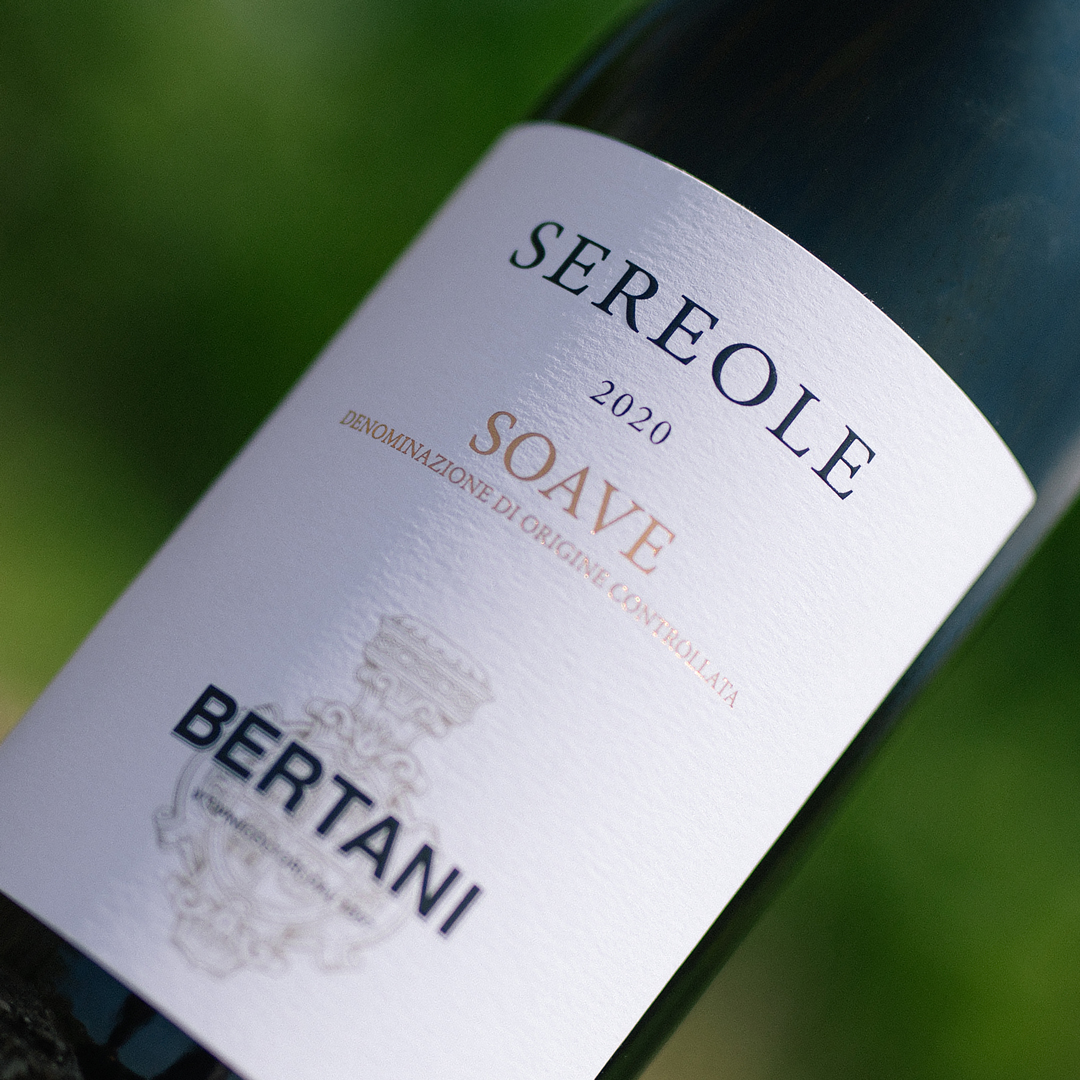
Wine lovers might recall a time when Soave was one of the biggest selling Italian styles world-wide, surpassing even Chianti sales in the US in the 1970s and 80s. Efforts by larger commercial producers to capitalise on this success led to exports of large quantities of diluted, low-cost wines that damaged the style’s image. Through the continuous work of wineries like Bertani however, the style has enjoyed a true renaissance, with smaller quantities, grape selection and modern winemaking methods key contributors.
NOBLE BEGINNINGS
In 1931 Soave was the first wine production zone in Italy, together with Chianti, to be recognised by Royal Decree as having the potential for producing fine wines. Embodying the typicity and refinement of the style, Bertani’s Soave DOC – already the flagbearer of Soave throughout the world - was chosen to be served at the coronation lunch of England’s King George VI in 1937. The wine was thereafter referred to as “the King’s Soave”. Bertani has ever since remained faithful to its production philosophy, making wines with an unmistakable stylistic profile, adapting over time while rigorously respecting ties to tradition.
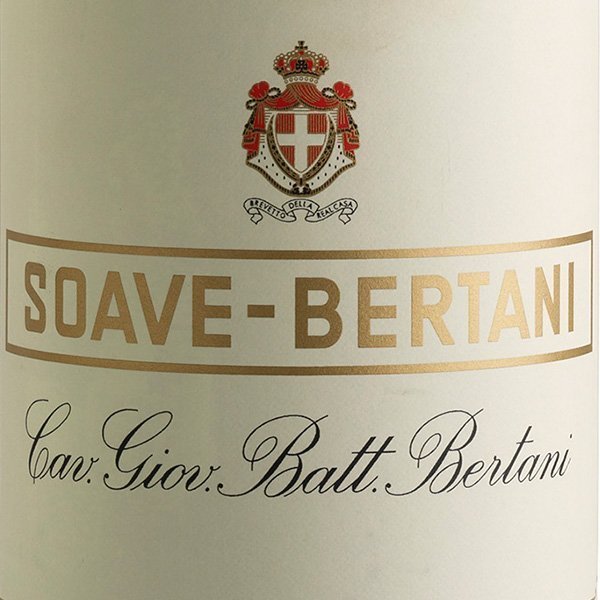
Bertani Soave DOC as served at the coronation of King George VI (Image: Bertani)
THE SOAVE DOC TERRITORY
This densely planted Soave region (DOC status was achieved in 1968), though not large, is one of the most specialised in Europe - remaining virtually unchanged for over 100 years.
Amidst a landscape of hills and castles to the east of Verona in North-East Italy, the territory stretches out for around 20 kilometres of hills and valleys, characterised by a complex mix of volcanic and limestone soils. In some points, the two types of soils are mixed, so even immediately neighbouring vineyards can have completely different soil compositions.
The more historic “Classico” appellation is reserved for wines made from grapes grown on the hillside vineyards around the municipalities of Soave and Monteforte d’Alpone in the original and oldest classic Veronese zone. The soils of this region are considerably less fertile than the alluvial soils in the plains. In the western part of the Classico sub-zone near the commune of Soave the soils contain a high percentage of limestone which retains the warmth of the afternoon sun and helps produce fuller, more fruit-forward wines.
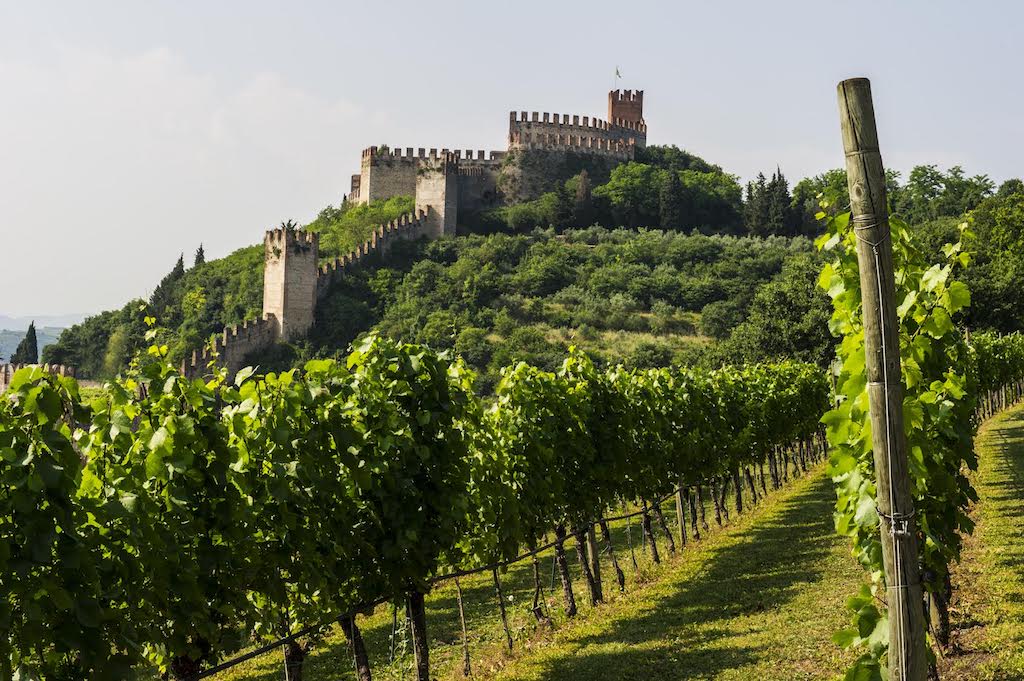
Soave Castle (Image: Consorzio Tutela Vini Soave e Recioto di Soave)
GARGANEGA – THE “ELEGANT” WINE GRAPE
Grown in the area since ancient times, Garganega, elegant and thick-skinned, is the autochthonous varietal that constitutes at least 70% of Soave Classico DOC. The remaining 30% may consist of a blend of local Trebbiano di Soave (not to be confused with the lesser-quality Trebbiano Toscano) and Chardonnay. The most authentic Soave DOCs tend to use 100% Garganega. Single varietal Soave is best made with grapes from the hillside vineyards, where lower yields, sun exposure and ventilation ensure perfect ripening and concentration. Bertani’s vines average 30-40 years, their roots going deep down into the terrain. This distinctive trait is perceptible in the wine’s rich, tangy mineral notes.
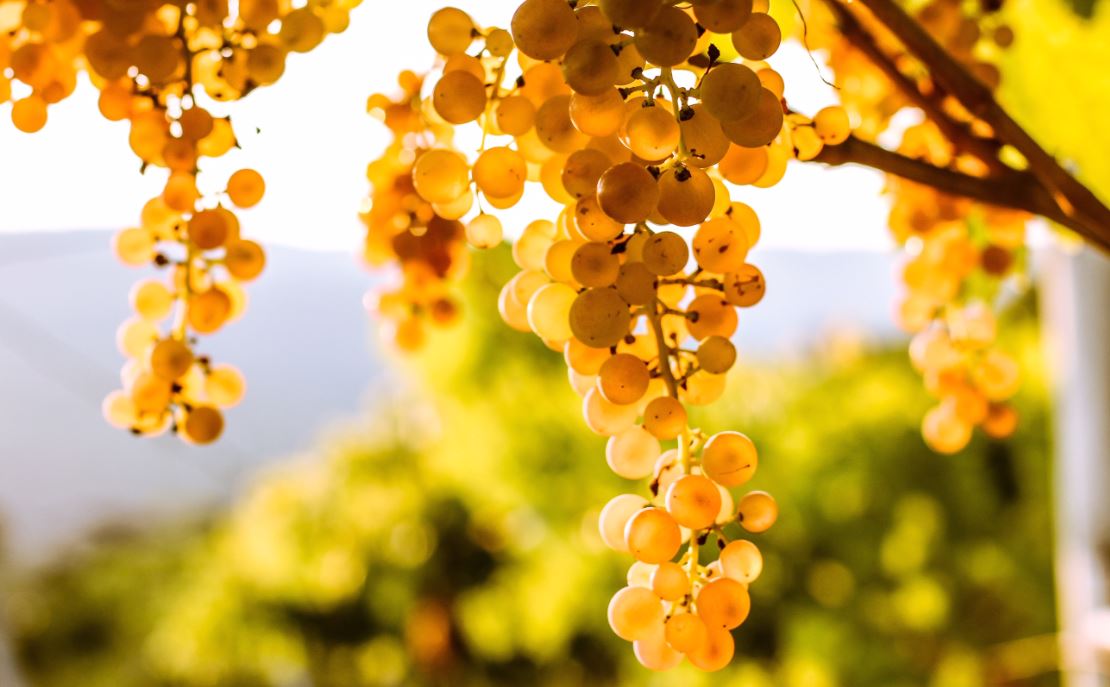
Garganega grapes in Autumn (Image: Consorzio Tutela Vini Soave e Recioto di Soave)
TRADITION AND INNOVATION
Bertani tradition and philosophy is alive and well in the Soave DOC Vintage Edition. This wine was intended as a modern Soave, made in the traditional method designed to exalt the sensory characteristics and natural aromatic qualities of the Garganega grape through a vinification technique that calls for partial fermentation on the skins, a process more common with red wines. In the 1930s, the choice of grapes was obvious as only hillside grapes were harvested. There was no need to partially dry them to guarantee a wine that was worthy of the King’s table.
Today, about 40% of the grapes are picked in September and the must is kept cold. The remaining grapes are picked in the first ten days of October, after careful bunch selection, and macerated with the skins on the cold must. The grapes macerate for 3-4 days. This process is a new interpretation of the 1930s production technique, to give the wine more freshness. Ageing is for 9 months on lees in concrete vats, slow and gradual, with a constant temperature and micro-oxygenation, with a further 6 months’ ageing in the bottle.\
The resulting wine is intense straw yellow with golden highlights. The nose hints at peach, pear and apricot. The palate is soft and mouth filling with a lingering aftertaste. A complex wine with great personality, it pairs wonderfully with more intensely flavoured fish dishes, white meats and antipasto platters.
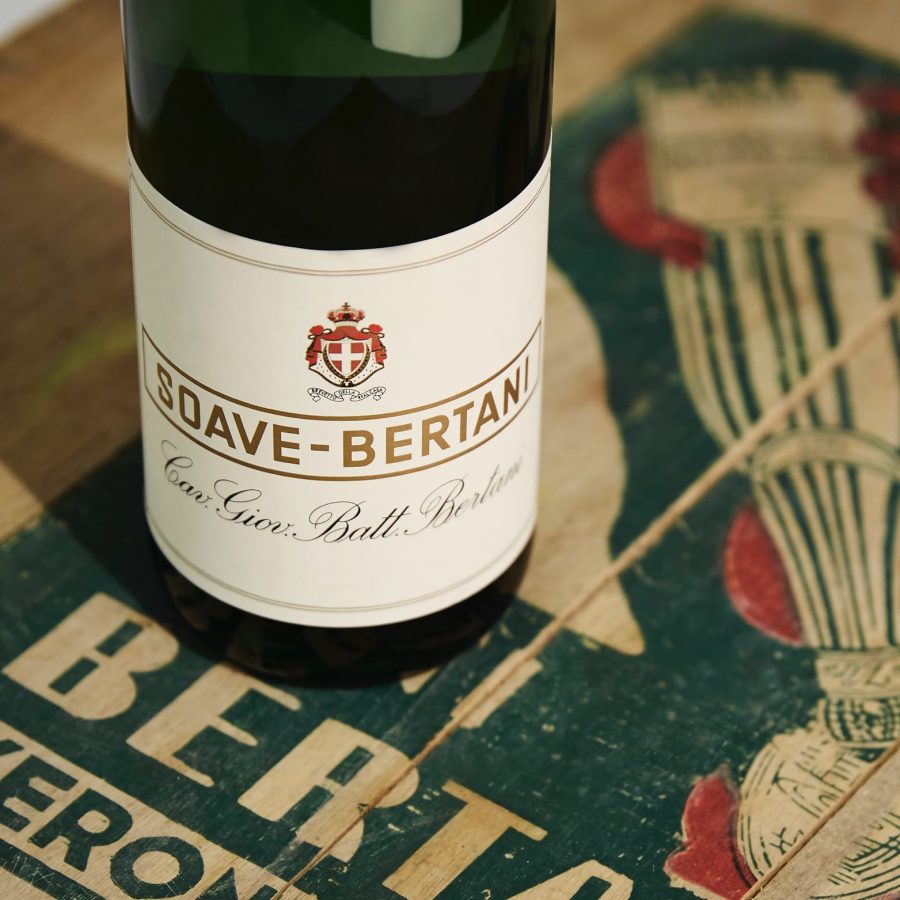
Bertani Soave DOC Vintage Edition (Image: Bertani)
In the most recent interpretation of its Soave, Bertani’s Sereole Soave DOC has a lively and distinct personality. A veritable cru made, once again, exclusively with Garganega grapes grown on younger vines (20 years) on the hillside between Soave and Monteforte d’Alpone with its marl limestone soil. The slightly late harvest, combined with fermentation of the must in large oak barrels, adds freshness and richness of flavour and marries well with a light ageing in wood to give the wine plushness and complexity. Aged on lees in French oak vats for around 5 months. The wine is an intense straw yellow, with an appealing nose of rich fruity notes of citrus and white flowers and a complex, lightly mineral palate. Its balance and personality make it ideal to savour with summer soups, light starters, vegetable dishes and white meats.
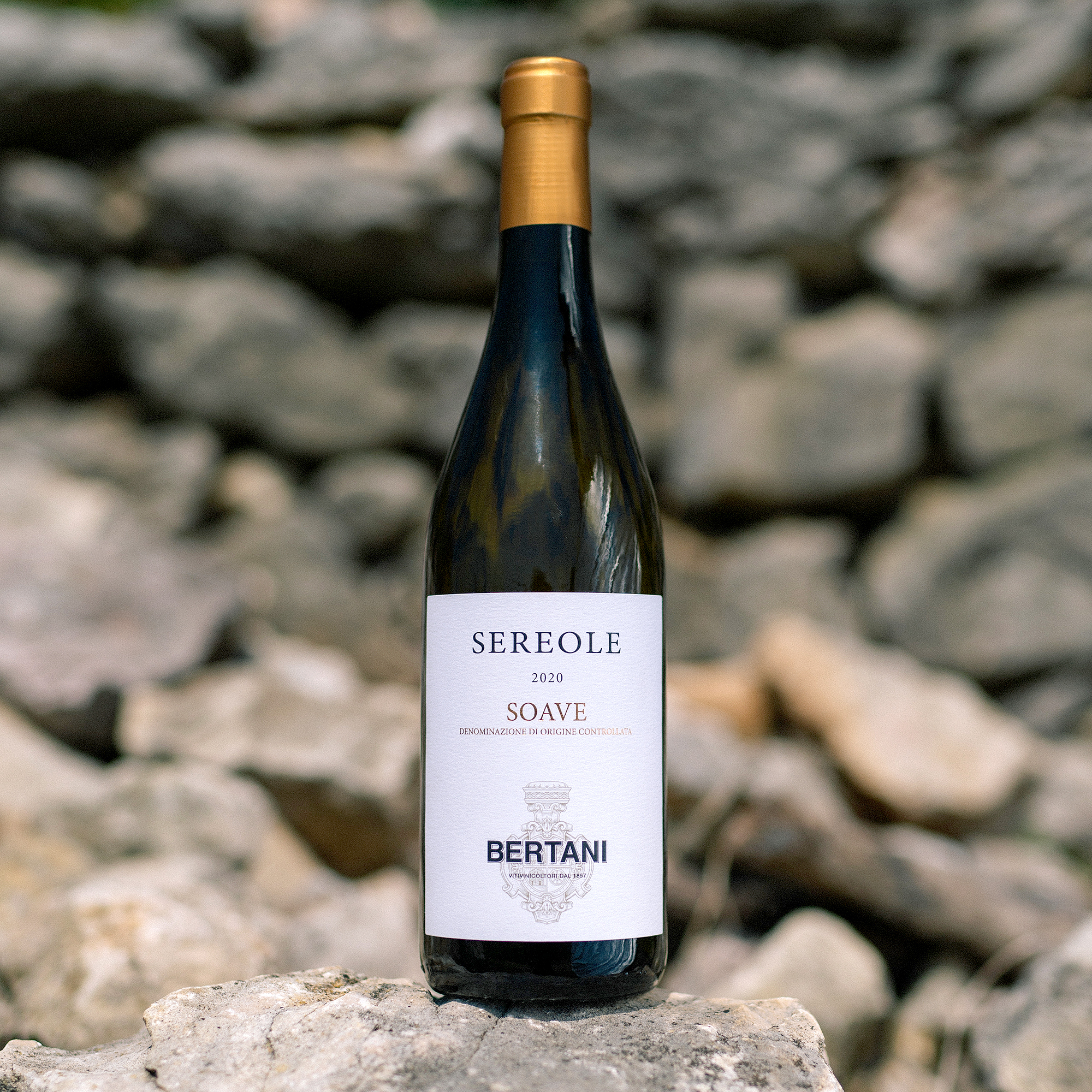
Bertani Sereole Soave DOC (Image: Bertani)
Anything but boring, Bertani Soave is complex enough to be enjoyed with light or leisurely summer lunches, but delicate enough to be savoured as an aperitif on its own, lightly chilled for a refreshing summer taste. For a cool summer twist, try mixing it up with some Crème de Cassis, sour apple liqueur, Prosecco and ice in an apple and blackberry spritz.
#SOAVESUMMER!

